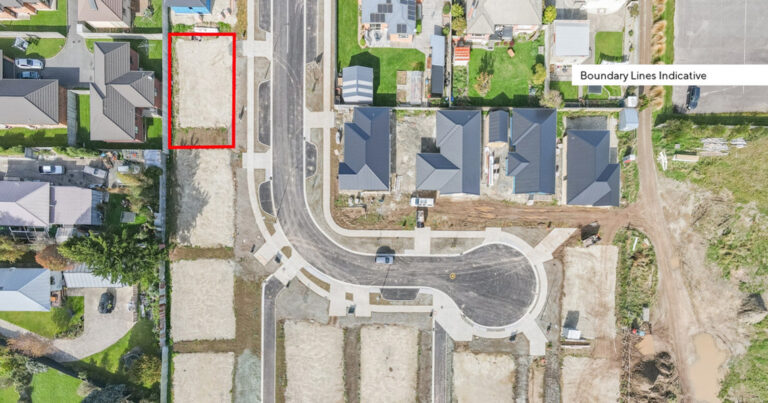The Subdivision Process

Subdivisions are a popular way of extracting value from property, particularly if you have a large backyard in a residential area where there is a shortage of land available for building. Carrying out a subdivision can seem like a daunting process if you haven’t done it before. If you are interested in subdividing your property, here are the general steps involved.
Can you subdivide?
When considering if you can subdivide your property, the first step is usually to contact a surveyor to see whether your property is suitable to subdivide.
In order to subdivide a property, there are minimum size requirements. For example, in the Residential 1 zone in Invercargill, the minimum property size is typically 800m2, to be able to create lots of at least 400m2.
In the Otatara zone, the minimum size requirement will depend on whether your property is connected to the city’s sewerage system. For the Rural zone, a property must be at least four hectares in order to subdivide, to be able to create lots of at least two hectares in size.
There are of course exceptions to these minimum size requirements, and the Council has discretion to permit smaller lot sizes within respective zones in certain circumstances. Your surveyor will be able to identify which zone and minimum size requirement applies to your property and whether the proposed subdivision would be permitted as of right, or if it would require Council’s discretion to be approved.
There may also be restrictions on subdividing, by way of land covenants or consent notices registered against your property’s Record of Title. You lawyer can provide advice as to whether there is anything on your Record of Title that could impact on your ability to subdivide.
Resource consent
Once you have established that your property is suitable to subdivide, your surveyor can apply to the local Council for a resource consent to subdivide. Your surveyor will draw up a scheme plan of the proposed subdivision and attach it to the application. This will identify any required easements such as for electricity, telecommunications and access.
If your consent is granted, the Council may attach conditions to the consent that you are required to follow. These conditions may vary based on the location of the property you want to subdivide and any access or infrastructure requirements.
Survey approval from Land Information New Zealand (LINZ)
After the resource consent has been obtained, your surveyor can begin formally surveying the property. They will prepare a Land Transfer (LT) Plan, which will show the proposed new lots and locations and types of easements and other interests such as land covenant areas to be created.
Once you and your lawyer are comfortable that the LT Plan reflects what you require for the subdivision, your surveyor will submit this to LINZ for approval as to survey.
Council approval
Upon receiving approval as to survey from LINZ, and the Council being satisfied that the works required by the resource consent are completed (such as constructing an access way to the required standard), or where conditions cannot be met yet – that the Council has prepared the consent notice to be registered against the relevant new titles – the Council will sign off on the LT Plan. The LT Plan will then be ready to deposit with LINZ as part of the subdivision of titles e-dealing.
Issue of new titles
It is at this point that your lawyer will begin preparing the easement instruments and land covenants to be registered.
Once you are comfortable with the terms in these documents, and you have obtained consent to the subdivision from your bank, your lawyer can apply to LINZ for the new titles to be created. This will involve you signing an A&I form to authorise the registration of the various documents for the subdivision.
Sale of additional lots
Often subdividing owners don’t undertake a subdivision until they have a purchaser lined up for the additional lot to be created. If you are selling one of the new lots immediately after the subdivision has been completed, settlement for the sale is usually set for 10 working days after the titles are issued by LINZ.
This gives the purchaser the opportunity to ‘requisition’ the new title – for example, if an easement they need hasn’t been brought down onto their title due to an error by LINZ, they can request this is corrected before settlement. It also allows enough time for you as vendor to obtain the required discharge of mortgage from your bank as part of the sale.
Our expertise can assist you
At AWS Legal, we have a number of specialist property lawyers across our branches who routinely undertake small to large scale subdivisions of residential, rural and industrial land. If you would like to investigate options for maximising the value of your property by way of subdivision, please get in touch with our team.
Contact Experts
Articles and Updates

















